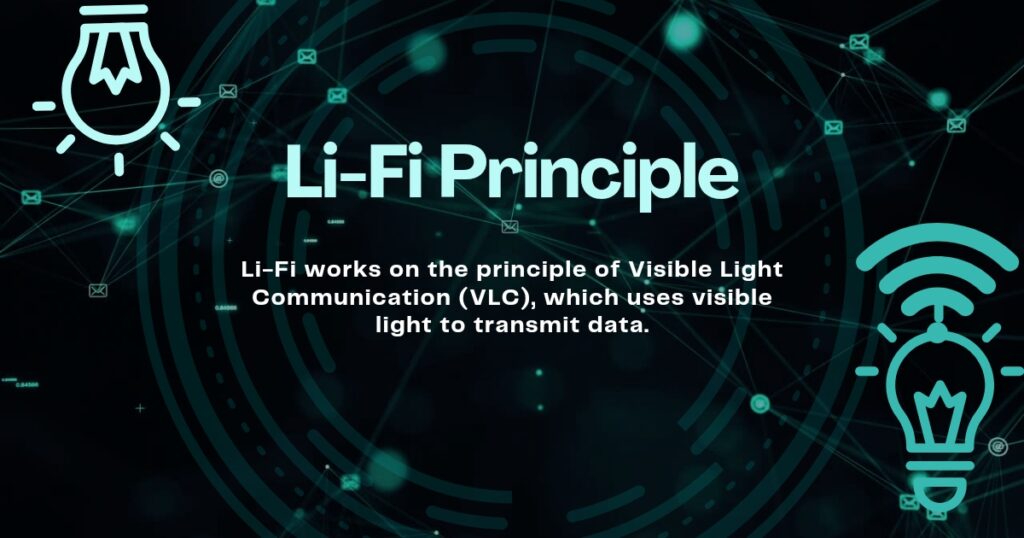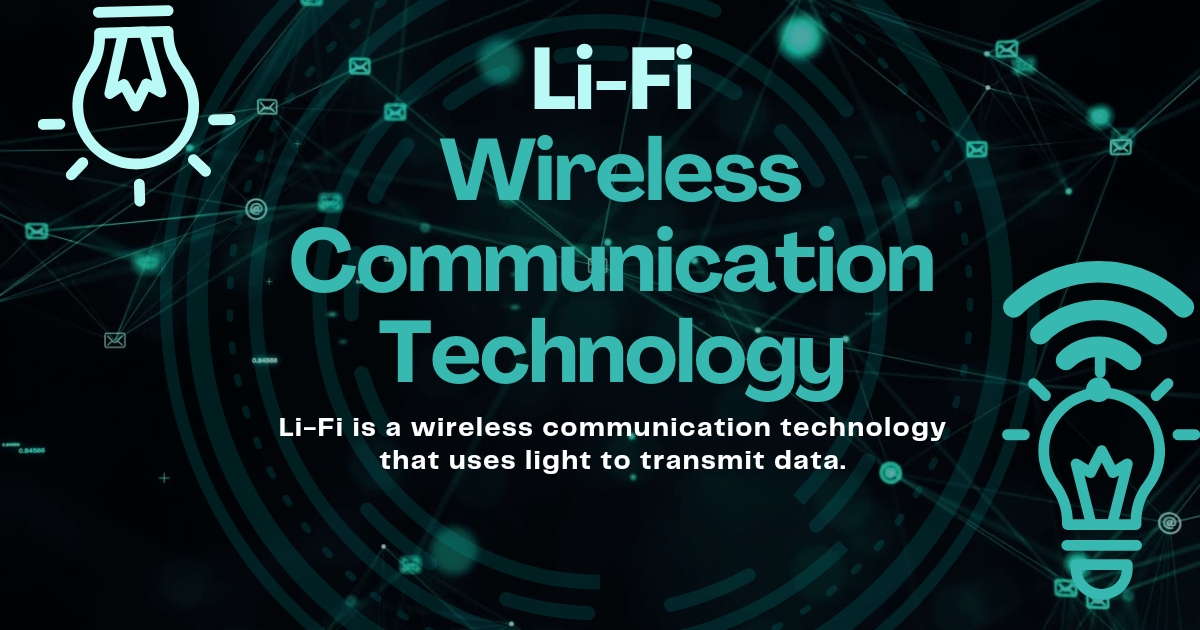Li-Fi (Light Fidelity) is a revolutionary wireless technology that uses light to transmit data, just like Wi-Fi uses radio waves! It’s like a super-fast, secure, and energy-efficient way to connect to the internet using the light around us.
Table of Contents
What is Li-Fi?
Li-Fi is a wireless communication technology that uses light to transmit data.
How does Li-Fi work?
Li-Fi uses light-emitting diodes (LEDs) to transmit data, which is then received by photodetectors or solar panels.
Li-Fi works by using special LED bulbs to transmit data through light. These LEDs flicker at incredibly high speeds, encoding digital data into the flickering pattern. A photodetector, usually a special chip, receives the flickering light and decodes the data from the changes in light intensity. The decoded data is then processed and used by the device, such as a computer or smartphone. As the data is transmitted through light, it requires a direct line of sight between the LED and photodetector, making it a secure and reliable connection. With Li-Fi, devices can connect to the internet and communicate with each other using the light around us, making it a revolutionary wireless technology that’s faster, more secure, and energy-efficient than traditional Wi-Fi.
Transmission:
LED Bulbs: Special LED bulbs are used to transmit data.
Flickering LEDs: These LEDs flicker at incredibly high speeds (beyond human visibility).
Data Encoding: Data is encoded into the flickering pattern of the LEDs.
Receiving:
Internet Connection: The decoded data is connected to the internet.
Photodetector: A photodetector (like a special chip) is used to receive the flickering light.
Decoding: The photodetector decodes the flickering pattern into digital data.
Key Points:
- Line of Sight: Li-Fi requires a direct line of sight between the LED and photodetector.
- No Interference: Li-Fi signals don’t interfere with other devices or radio frequencies.
- Secure: Li-Fi signals are confined to a physical space, making it harder for hackers to intercept.
Li-Fi Principle:

Li-Fi works on the principle of Visible Light Communication (VLC), which uses visible light to transmit data.
Is Li-Fi available now?
Yes. Li-Fi is available now, but it’s not yet widely used. Some companies offer Li-Fi products, but it’s not as common as Wi-Fi. You might not find Li-Fi in your home or local coffee shop yet, but it’s being used in some special cases like:
- Secure offices
- Industrial settings
- Some public spaces
It’s still a new technology, and it will take time for it to become more widely available.
Li-Fi vs Wi-Fi : Difference
| Characteristics | Li-Fi | Wi-Fi |
|---|---|---|
| Transmission | Light | Radio Waves |
| Speed | Faster | Slower |
| Security | More Secure | Less Secure |
| Interference | No Interference | Prone to Interference |
| Range | Shorter Range | Longer Range |
| Power Consumption | Low Power | High Power |
Think of it like this:
- Wi-Fi uses radio waves to transmit data through the air
- Li-Fi uses light waves to transmit data through the air
Read More : Quantum Computing
Li-Fi advantages:
- Faster speeds: Li-Fi can be up to 100 times faster than Wi-Fi!
- Secure: Li-Fi signals are confined to a physical space, making it harder for hackers to intercept
- Energy-efficient: Li-Fi uses existing LED infrastructure, reducing energy consumption
In simple words: Li-Fi is a game-changing technology that uses light to connect us to the internet, making our digital lives faster, safer, and more sustainable!
Conclusion
Li-Fi, or Light Fidelity, is a revolutionary wireless technology that transmits data through light, offering faster speeds, enhanced security, energy efficiency, and reduced interference. Using special LED bulbs, Li-Fi encodes data into flickering light, received and decoded by photodetectors. With a direct line of sight required, Li-Fi provides secure connections. Although not yet widely available, Li-Fi is being implemented in secure offices, industrial settings, and public spaces. Compared to Wi-Fi, Li-Fi boasts faster speeds, improved security, and reduced interference. Potential applications include indoor wireless communication, public hotspots, industrial automation, smart cities, and underwater communication. As Li-Fi continues to develop, it may become a game-changing technology for faster, more secure, and sustainable connectivity.
FAQs about Li-Fi
1. What is Li-Fi?
Li-Fi is a wireless communication technology that uses light to transmit data between devices.
2. How does Li-Fi work?
Li-Fi works by modulating light signals from LED bulbs or laser diodes to encode data, which is then received by photodetectors or optical receivers.
3. What are the benefits of Li-Fi?
Li-Fi offers:
1.Enhanced security
2.Higher speeds (up to 224 Gbps)
3.Energy efficiency
4.Increased density
5.Reduced interference
4. Is Li-Fi faster than Wi-Fi?
Yes, Li-Fi can achieve speeds up to 100 times faster than Wi-Fi.
5. What is the range of Li-Fi?
Li-Fi signals can cover a range of up to 10 meters (33 feet).
6. Is Li-Fi secure?
Yes, Li-Fi signals are confined and difficult to intercept, making it a secure option.
7. Can Li-Fi work without electricity?
No, Li-Fi requires power for LED bulbs or laser diodes.
8. What types of devices support Li-Fi?
Li-Fi-enabled devices include:
* Smartphones
* Laptops
* Tablets
* Smart home devices
9. Can Li-Fi coexist with Wi-Fi?
Yes, Li-Fi operates on a different spectrum, allowing simultaneous use.
10. What are the potential applications of Li-Fi?
Li-Fi can be used in:
* Indoor wireless communication
* Public hotspots
* Industrial automation
* Smart cities
* Underwater communication
Additional resources:
- IEEE 802.15.7r standard for Li-Fi
- Li-Fi Alliance for industry development
- Research papers on Li-Fi technology
